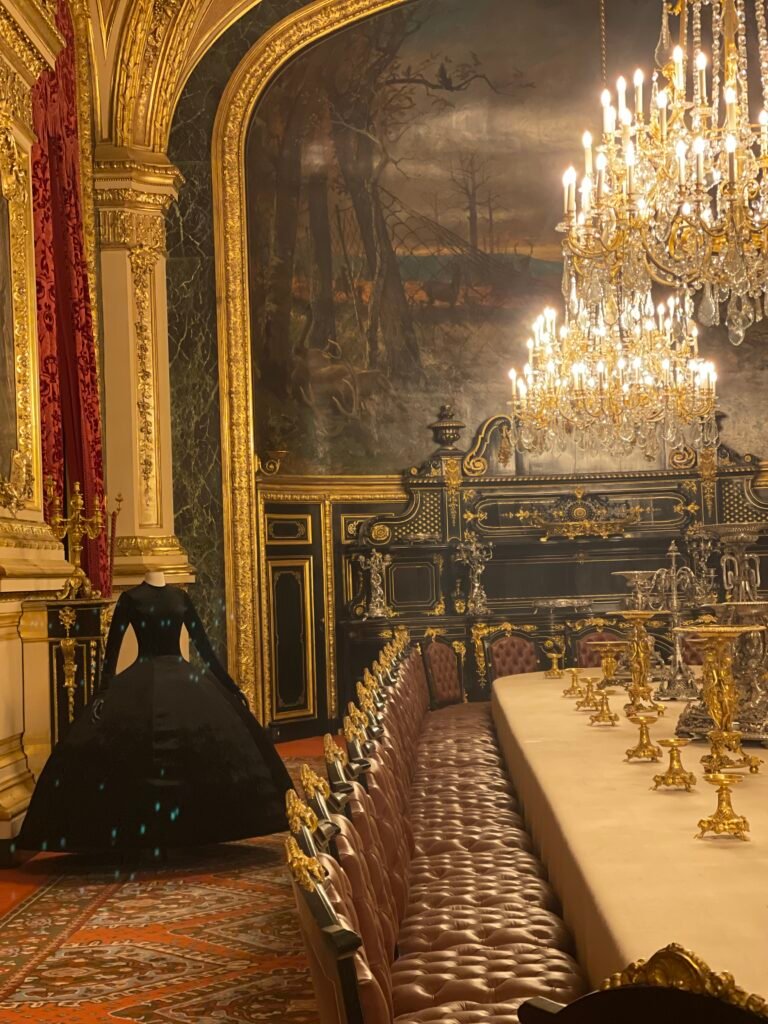Objets d’Art, Objets de Mode

My visits to the Musée du Louvre are infrequent enough that my senses are still completely disarmed and slain anew by the gravitas of the museum. A possession occurs when one enters, an instinct to speak softer and look closer, a serene deference tantamount to what one may describe as a religious experience when stepping inside the Notre Dame, the hallowed Parisian cathedral, only a pleasant walk away. On one crisp February evening, as the glass pyramid in the center of the Cour Napoleon was at its most glistening, my husband, our two children and I entered the Louvre to take in its first fashion exhibition- Louvre Couture: Objets d’art, Objets de mode
The exhibition spralls through the galleries of the Department of Decorative Arts. 65 dresses and a select number of accessories from the work of the world’s indomitable fashion figures are displayed amongst the museum’s encyclopedic collection of decorative artifacts and accessories of war. Select dresses were showcased amongst the consummately intricate wonders that are sixteenth-century Renaissance Flemish tapestries. Others, most strikingly a Balenciaga armor dress, stood staunchly amongst medieval warfare vesture. And in Napoleon III’s private apartments, where velvet drapes are an unreal red and the reflection from Second Empire golden ornaments seems like the fragrance of candlelight made visible, more fashion.
The curation and installation are triumphs in their own rights. For a family of particular, often individual interests, the chosen spaces for where dresses were exhibited were genius. My daughter walked up to a silk organza with laser-cut crêpe and stainless steel creation by Iris van Herpen squinting to study the origin of the illusion of weightlessness in Napoleon III’s grand salon, a room ecclesiastically festive. A Dries van Noten coat, fastidiously tailored by the Belgian designer was wholly commensurate with the elaborate Flemish tapestries it was surrounded by. My son’s eyes darted from coat to tapestries, tapestries to coat, eavesdropping on the silent dialogue between the contemporary piece and the works from the enlightenment. At the near end of the exhibition, my husband and I stood dazzled as we looked upon a Balenciaga creation, a soulful black, bonded velvet, full sleeve, close neck dress as it stood in the Second Empire’s formal dining room, imagining up memories of dinner parties.
The centuries between the couture pieces and the historical artifacts stretches into a distance of impassibility yet Olivier Gabet, curator behind this explosion of beauty, weaves us through like thread from one era to the next. If to highlight the continuous wellspring of inspiration history is to fashion was the desired effect, prayers answered.
